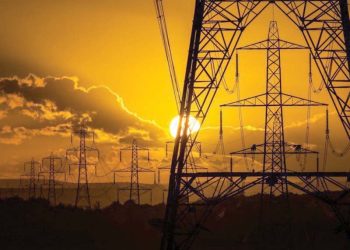Tesla owners can now see exactly what kind of energy is powering their electric vehicles. TezLab, a free app that’s like a Fitbit for a Tesla vehicle, pushed out a new feature this week that shows the energy mix — breaking down the exact types and percentages of fossil fuels and renewable energy — coming from charging locations, including Superchargers and third-party networks throughout the United States.
“We’re tracking the origin of data as it relates to energy, so we know if you’re in Tucson or Brooklyn (or any location) where the energy is coming from and what the mix of that energy looks like,” Ben Schippers, the CEO and co-founder of TezLab explained in a recent interview. “As a result, we can see how much carbon is being pushed out into the atmosphere based on your charge, whether you’re charging at home, or whether you’re charging at a Supercharger.”
ElectricityMap, a project from Tomorrow, provided the energy data, which TezLab then folded into its consumer-facing app. Once downloaded, the app knows when and where a Tesla owner is plugging in. The energy mix feature builds off of an existing program on the app that gave owners more general information on how dirty or clean their charge is.
Take Tesla’s Linq High Roller Supercharger in Las Vegas, a V3 Supercharger that is supposed to support a peak rate of up to 250 kilowatts and has been heralded for its use of Tesla solar panels and its Powerpack batteries to generate and store the power needed to operate the chargers.
According to TezLab’s data, 1.7% of the energy is from solar. The primary source of renewable energy is actually hydro at 65.6% — courtesy of the Hoover Dam. The remaining energy mix from the Supercharger is about 33% natural gas.
Tesla’s Supercharger in Hawthorne, California, which was one of the first to have solar panels, has an energy mix of 0.2% solar, 5.5% nuclear,13.3% natural gas, 27% coal and 49.9% wind.
The top 10 “cleanest” Superchargers — a list that includes Centralia, Leavenworth, Moses Lake, and Seattle, Washington — achieved that goal thanks to hydroelectric power. Superchargers with the most solar energy are all located in the same power grid in California. Superchargers in Barstow, Oxnard, Cabazon, San Diego, Mojave, Inyokern, San Mateo, Seaside, and Santa Ana, California all have 22.7% solar and 15% wind energy. The remaining mix at these locations is 0.2% battery storage, 2.9% biomass, 5.6% geothermal, 6.3% hydro, 6.6% nuclear, and 40% natural gas.






